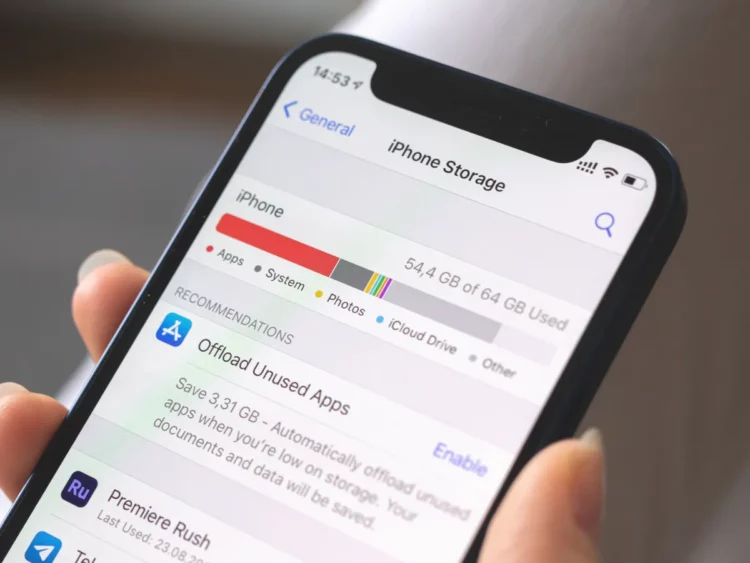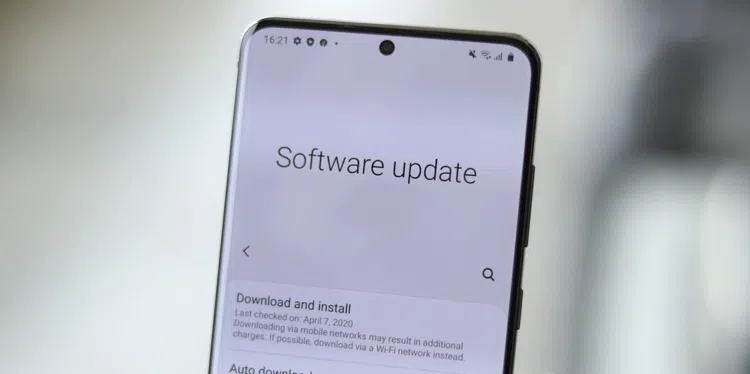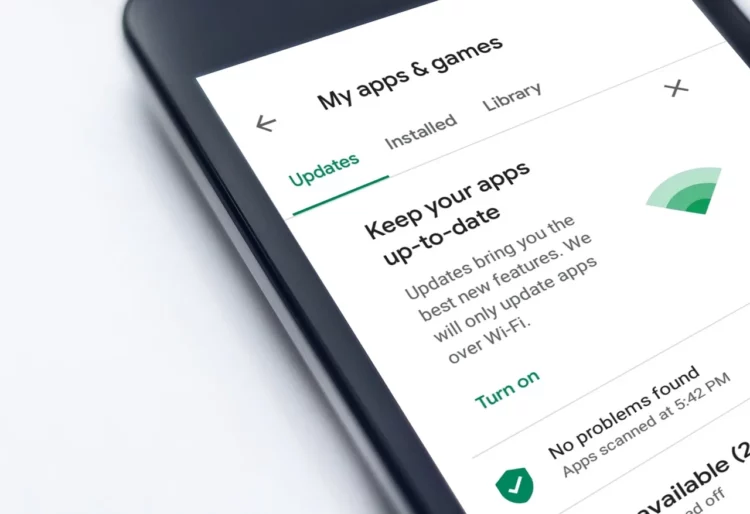In the age of mobile devices, iPhone and Android updates are a routine part of our lives, and they do take up storage sometimes causing issues. Here we will explain the storage issues and solutions in regards to iOS and android updates.
Whether it’s updating apps or the operating system itself, these activities can have varying impacts on our phone’s storage.
This article aims to provide detailed answers, focusing on both iPhone and Android devices.
Let’s dive in!
Understanding Common Storage Sizes and Their Limitations

In today’s smartphone market, storage sizes can vary significantly, ranging from as low as 16GB to as high as 1TB. However, it’s crucial to note that anything under 32GB is generally considered insufficient for modern usage.
Phones with less than 32GB of storage are more prone to running into issues, especially when it comes to updates.
Why is this the case? Well, system updates, app updates, and even daily tasks like browsing and taking photos can quickly fill up your iPhone storage.
When your phone’s storage is nearing its limit, you may encounter performance issues, app crashes, and you may not be able to download important system or security updates. This can leave your device vulnerable to security risks and prevent you from enjoying the latest features and improvements.
For iPhone users, the minimum storage offered in newer models is usually 64GB, which provides a reasonable amount of space for iOS updates and other content.
Android users, however, can find a broader range of options, including budget models with lower storage capacities.
If you’re considering an Android phone with less than 32GB, it’s advisable to check if the device supports expandable storage via a microSD card. This feature can be a lifesaver, allowing you to offload photos, videos, and even some app data to free up internal storage.
While it may be tempting to save money by opting for a phone with less storage, doing so can lead to headaches down the line.
Investing in a device with adequate storage will not only enhance your user experience but also ensure that your phone remains functional and secure in the long run.
How Downloaded Updates Take up Storage

The first step in any update is downloading the necessary files.
You’ll need enough storage space to accommodate these files, whether it’s a minor app update or a significant system or iOS overhaul.
For iPhone users, a common glitch can cause iOS updates to download repeatedly, filling up your storage until it causes functional issues.
Android users are not exempt from storage woes either, as bulky updates can also eat up space quickly.
Installation: What Happens Next?
After the files are downloaded, the installation process begins. During this phase, no additional storage is consumed.
The installation merely rearranges or replaces existing files, so if you had 30 GB free after downloading, you’d still have around 30 GB during the installation.
However, it’s worth noting that some system updates, especially on iPhones, can temporarily consume more storage due to the way iOS handles system data.
The Cleanup Phase
The cleanup phase is crucial in the update process. Redundant files are usually deleted, freeing up some storage.
However, this is not always straightforward. On iPhones, for example, “System Data” can sometimes grow to a massive size, leaving users with limited options to fix it.
Android users may also find residual files that need manual deletion.
System Updates: The iPhone Quandary
iPhones have a unique challenge when it comes to iOS system updates. The “System Data” category can sometimes consume all available storage, causing significant issues.
This problem is often due to caches or logs being continually added but not deleted at a pace to keep up with writes.
The only solution in such cases is to backup your data and perform a restore and iOS update, which usually frees up a significant amount of storage.
How System Updates Take up Storage on Android
Android devices also face challenges with system updates. These updates often come with patches to security vulnerabilities, requiring additional storage.
Unlike iPhones, Android allows users to manually manage their storage to some extent, offering a bit more flexibility.
What Happens When You Update an App? (3 Things)

If you really want to understand how much storage is used by app updates, then we should go through the whole process.
There are a few different steps that happen along the way, and they impact how the app uses storage—particularly for an update.
It’s worth noting that on a technical level, automated updates are pretty complicated things.
I’m going to distill all of it down into three basic concepts as they relate to phone storage.
Those concepts are downloading, installing, and removing files.
#1 Downloading Files
The first step in the process is downloading the new files that will be installed later.
In most cases, when a download starts (or even queues to start at a later time), you will see a number that tells you how big the download is.
Most app updates will be measured in megabytes (MB).
Small updates might only be kilobytes (kb), while the largest updates will take up Gigabytes (GB) of space.
I’m going to skip the long version and tell you that the starting model of the current Samsung Galaxy has 512 GB of storage.
The current iPhone starts at 128 GB (with options for more storage).
If we remember that 1 GB holds 1,000 megabytes, and 1 megabyte holds 1,000 kilobytes, it can help you think about how big any given download is.
Here’s the most important thing about downloading files.
You need enough room for the whole download in order to run the update.
So, if you need to update 30 apps all at once, you might lose a whole lot of space to the downloads.
This isn’t the end of the story, but at least for a little bit, the downloads can use a lot of your phone’s storage.
#2 Installing Files
After the files are downloaded for the update, they are installed.
You will usually see a progress indicator on your app icon while this runs.
The process of installing files does not add any data to the phone.
That all happened during the download.
So, once downloading is complete, the app won’t use any additional storage for the duration of the update.
If you have 30 GB free when the downloads finished, you will still have 30 GB free while the updates run.
Once again, this isn’t the final step in the process, so there’s more to consider, but if the downloads succeeded, then you should have enough space to install the update.
#3 Cleanup
This is arguably the most important part when it comes to running updates.
After the update is complete, any unnecessary files will automatically be deleted.
This usually frees up a fair amount of storage space in the phone at the end of the updates.
The key to the whole thing is that updates often replace one set of files in the app with a new set.
So, say you have a 1 MB update that needs to be installed.
There’s a good chance that much of that data will be replacing files on the app, and the old files are deleted during the cleanup phase.
Because of that, it’s impossible that the amount of storage you have at the end of the update is the same (or near the same) as what you had when you got started.
I want to emphasize that there is no one rule that always holds true.
Some updates add a bunch of new features, so they’ll probably increase the storage used by the apps.
Other updates actually make things more efficient, and when it’s done, the app could take up less space than before.
It all depends on what is in the update, but across the large average, updates usually only add a little bit of data each time.
How Much Phone Storage Does an App Update Take?
Since updates are always different, it’s tough to say just how much data any one update will use, so I’m going to explain a few aspects of this.
An update starts with a download.
That means that you need enough space on the phone for the download.
Later, you might get some space back, but at maximum, the update uses space equal to the size of the download.
It will never be more than that.
As I said before, the nature of the update might have different outcomes.
The app could use more, the same, or less storage space once the cleanup is finished.
More often than not, the app will be a small amount bigger than when you started.
If you multiply that by hundreds of updates across hundreds of apps, then over time, app updates actually will put a dent in your total storage.
But for any one update, it’s unlikely that you need to worry about its impact on your phone’s total storage.
Will Updating Apps Kill Your Phone Storage?
This makes even more sense if we make some comparisons.
App updates might take up a few Gigabytes of space across a lot of different updates.
At the same time, app data can increase a lot faster.
I’ll explain more about what app data is and how it works in the next section.
For now, though, what matters is that app data usually eats up many times as much storage as the apps themselves.
So, when it comes to running out of storage, adding brand new apps and creating a lot of data with your apps will kill your storage space long before updates ever have the chance.
There is one exception, though.
Sometimes, apps have bugs, and they don’t properly clean up after themselves when they update.
If this is ever the case, then your storage usage is going to change noticeably after each update.
Usually, the best solution is to delete the app and reinstall it.
This will get rid of all of the old files that aren’t needed.
If that doesn’t work, you can reach out to the app developer for support.
App Data
Ok. Let’s talk more about app data since it’s so important to your phone’s storage.
When you use an app, you tend to create some data in the process.
Your login information is saved on the phone. Things you download via the app will be saved.
If you’re playing a game, then your saved states take up space.
With some apps, you can create a lot of data.
Snapchat is a great example.
You can take a picture using the app, and then you can save that picture.
Every picture you save (and even every edit of every picture that you save) adds to the app data.
If you’re creating video, audio, or images with an app, then the app data scales up quickly.
This is usually the primary way that apps eat up storage space.
Look at your phone’s storage and see which apps are the hungriest for space.
Those are probably apps where you create these kinds of data.
How Can You Free Up More Phone Space? (2 Things)
Even though app updates aren’t the primary killers of phone storage, you might find yourself short on space.
In a worst-case scenario, you might not be able to run an important update for an app you care about, all because you are short on space especially on iPhone.
If that ever happens, there are a couple of easy things you can do that quickly free up a lot of phone storage.
#1 Move Data to the Cloud
The easiest way to save data is by getting app data off of your phone.
These days, the hungriest apps usually have options to save everything to your account or in the cloud.
You can then remove the data from the phone itself and save tons of storage space.
Also: Managing Photo Storage: Google Photo Storage
In some cases, you might have to pay for that cloud storage, but either way, it gets the most data-intensive stuff off of the phone.
If cloud storage is out of the question for any reason, you can also plug your phone into a computer and unload app data there (especially in the form of videos, audio files, and pictures).
It’s usually a lot easier and cheaper to expand computer storage, so this is a great way to save space on the phone.
#2 Offload Unused Apps
You can also get rid of data from apps that you don’t use anymore.
You can manually go through them and delete them as you see fit.
In most cases, an app uses a lot more storage space than any one of its updates for ios and Android.
Even better, modern phones will do this automatically for you if you let them.
The processes save some essential information for the app so you can easily reinstall it later and keep the most important personal data tied to it.
But, when the app is flagged as unused, the core of the app is deleted, freeing up a ton of space.


